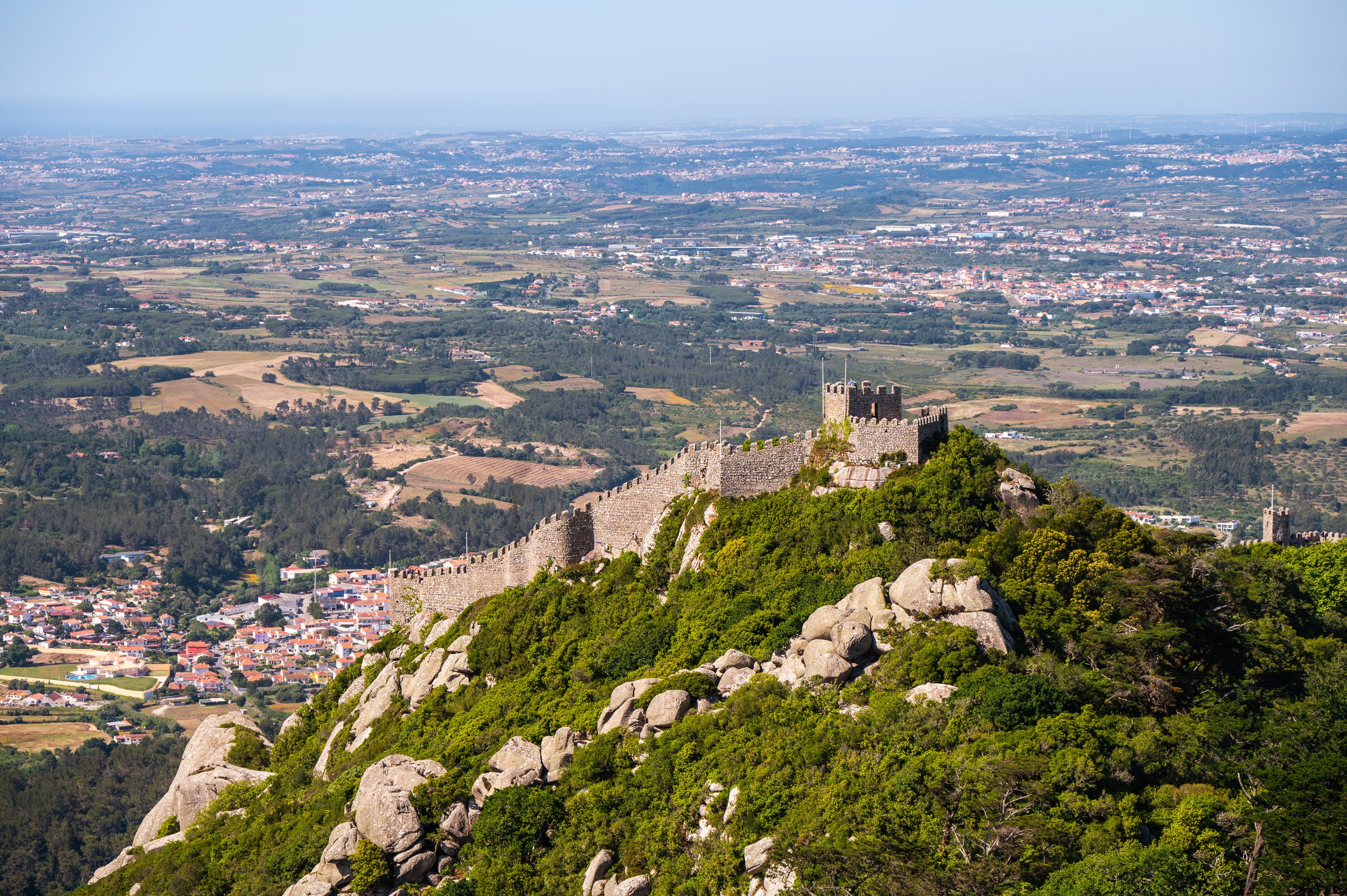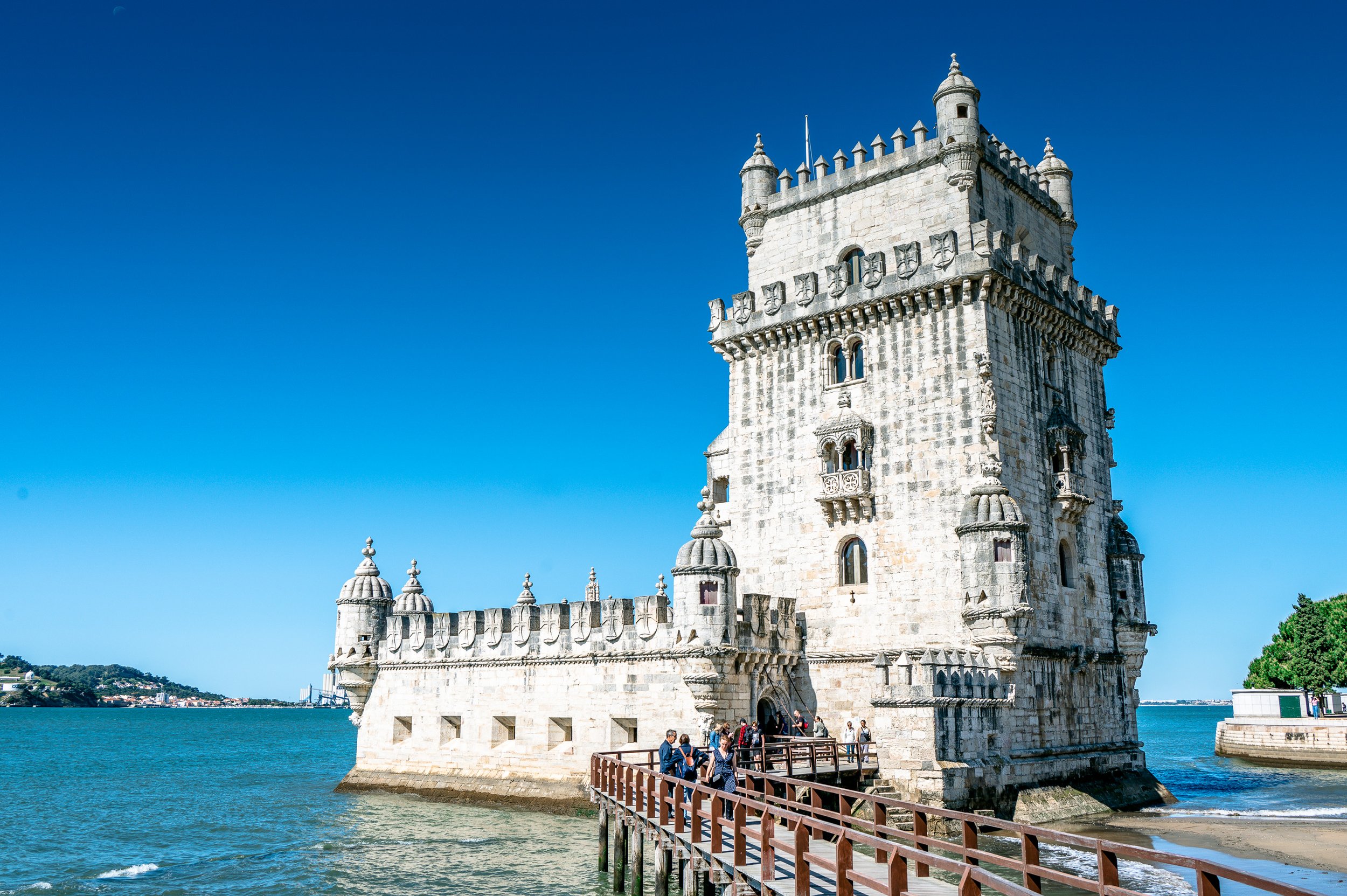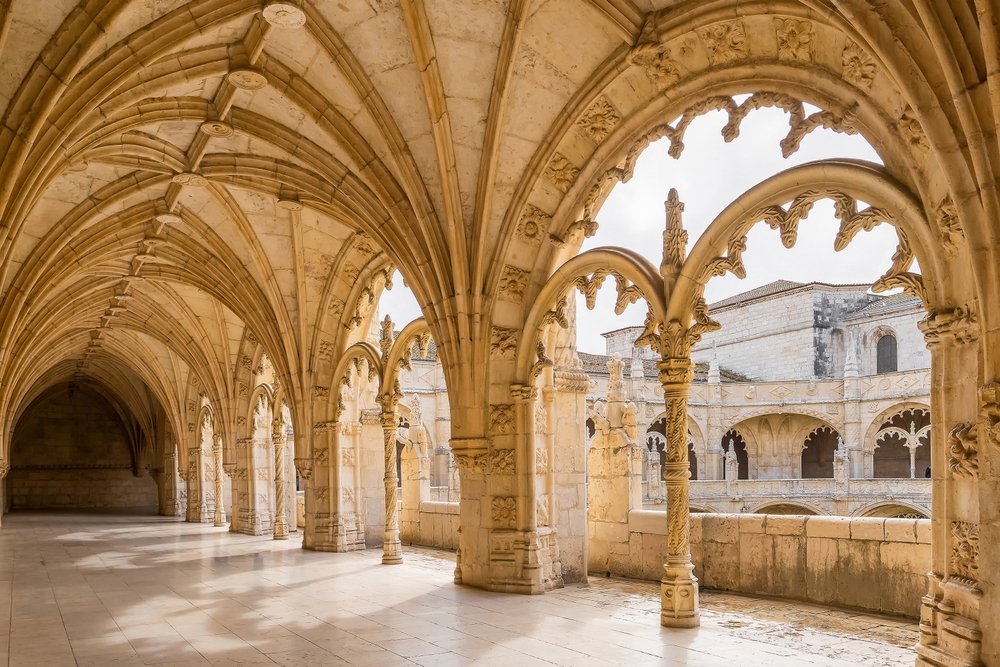How to Spend 4 Days in Portugal's Fabulous Lisbon: Itinerary
Lisbon, which lives up to its name as the “City of Seven Hills” (have you seen this TikTok? It’s not much of an exaggeration) stands as a captivating tapestry of history, culture and beauty.
Disclaimer: I grew up not far from this city, and as a result, it has a pretty special place in my heart. Since moving to the US in the mid 1990’s, I haven’t gone back as much as I would like. But when I do go back, I constantly marvel at its old world charm that remains unchanged despite how the city grows and modernizes.
In recent years, tourism in Portugal has absolutely blown up, and I don’t see it stopping anytime soon. Summer in Portugal may not be quite as hectic as summer in Italy, but if you’re visiting during summer months, you’ll definitely need to plan accordingly. To help you out, I’ve crafted this 4-day itinerary that promises to unveil its hidden gems, iconic landmarks, and vibrant neighborhoods. Whether you’re drawn to the intricate azulejo tiles, the echoes of Fado music, or the grandeur of historical sites, this guide will ensure an unforgettable journey through Lisbon.
Lisbon's charm goes beyond traditional "must see" attractions. The city's allure is found in its relaxed artistic vibe, creating an enchanting ensemble of experiences rather than singular sites. However, it's wise to avoid certain tourist traps during your brief visit, such as riding the Santa Justa Elevator or Tram 28. I’ll elaborate on that below.
Please note: This post may contain affiliate links. This means I may earn a small commission, at no additional cost to you, if you make a purchase by clicking a link on this post. Thanks for your support!
Praça do Comércio, Lisbon
May 2023 by Ana Santos
Day 1: Immerse Yourself in Lisbon's Historic Center
Your arrival time in Lisbon will highly depend on your origin point. If flying in from the US East Coast, you’ll likely land in the early morning hours, just in time to catch the buzz of breakfast. Reward yourself with an espresso and your first pastel de nata. Depending on your accommodations, it might be worth dropping off your luggage so you are free to explore until it’s time for check-in.
In order to get the lay of the land, consider joining a walking tour or TukTuk sightseeing tour. Or, if you’d rather adventure out on your own, start by walking the labyrinthian streets of the Baixa neighborhood.
Baixa: Exploring the Heart of Lisbon
Start your day in the heart of Lisbon, Baixa. This lively neighborhood is home to some of the city's most popular tourist attractions, including the Rua Augusta Arch, Rossio Square, and the Carmo Convent. Be sure to wander around the narrow streets and alleyways, and stop for a coffee or pastry at one of the many cafes.
Along the way, you will come across Santa Justa Elevator, an iconic ironwork structure dating back to 1902. While you could ride it to the top, the lines are usually long and slow. What if I told you that by walking around to the street behind it, you could walk onto the elevator viewpoint platform for free and without standing in line?
While I recommend having a coffee and pastry virtually anywhere in Lisbon, keep in mind that the restaurants in this area can very much be considered a tourist trap. Prices will be high and the food won’t be quite as authentic. But one thing is for sure, you can’t deny the views.
Historic Tram 28
Chiado: Where Artistry and Culture Converge
Chiado is Lisbon's artistic and intellectual district. Here you'll find art galleries, bookshops, and cafes, as well as the Livraria Bertrand, the world's oldest bookstore. Be sure to visit the House of Ferreira das Tabuletas, a beautiful building with an intricate azulejo (hand-painted tile) facade.
Convento do Carmo, Lisbon
Carmo Convent: Echoes of History
The Carmo Convent (Convento do Carmo) is a ruined convent in Lisbon, Portugal. It was one of the largest and most important convents in Lisbon before it was destroyed in the 1755 Lisbon earthquake. The ruins of the convent are now a popular tourist attraction, and they offer a unique glimpse into the history of Lisbon.
The 1755 Lisbon earthquake caused extensive damage to the Carmo Convent. The roof of the church collapsed, and the walls were severely damaged. The convent was never rebuilt, and the ruins have been left as a reminder of the earthquake. In the 19th century, the ruins of the Carmo Convent were excavated, and a small museum was created. The museum houses a collection of artifacts from the convent, including sculptures, tombs, and azulejos.
The museum is open from 10:00 AM to 6:00 PM, Tuesday to Sunday and admission costs only €5 for adults and €3 for children.
Pink Street
Bairro Alto: A Fun Night Out
Bairro Alto is a maze of narrow streets and alleyways, lined with bars, restaurants, and fado houses. The streets are always bustling with activity, especially at night, when the neighborhood comes alive with music and laughter.
If you're looking for a lively night out, Bairro Alto is definitely the place to be. There are bars and clubs to suit all budgets and tastes, and the atmosphere is always electric. And if you're looking for something a little more traditional, be sure to catch a fado performance in one of the many fado houses.
For a really special end to your first day, catch the sunset at Miradouro de Santa Caterina and indulge in a cocktail at one of the neighborhood’s rooftop bar.
In addition to its nightlife, Bairro Alto is also home to some interesting historical landmarks. The São Roque Church is a beautiful 16th century church with a stunning interior, and the Miradouro de São Pedro de Alcântara is a viewpoint with panoramic views of the city.
Day 2: Discovering Alfama's Historic Grandeur
Alfama: Immersed in History and Fado
The oldest and most charming district of Lisbon, Alfama is a maze of narrow streets and alleyways, with whitewashed houses and flowers spilling from windows. Alfama was originally founded in the 8th century by the Moors, and it was the original city of Lisbon. And because it escaped damage from the 1755 earthquake, what you see today has stood in its place for over one thousand years.
Take a moment to let all of that history sink in. It’s no wonder Alfama is one of the most cherished neighborhoods in Lisbon.
If you prefer to have a guided tour, consider this Alfama Tapas Tour and Sunset Sailing to cap off your day.
Castelo de São Jorge, Lisbon
May 2023 by Ana Santos
St. George's Castle: A Sentinel Seeped in History
St. George’s Castle sits on Lisbon’s highest hill and can be seen from virtually anywhere in the downtown area.
The common ways of getting up to the castle are to board the historic Tram 28 (not recommended), or a tuktuk. Or you could hoof it. The climb will humble even the most seasoned hiker. You’ll break a sweat, but it will be worth it.
An insider tip? If you happen to be in the Martin Moniz area, look for the 32m escalators that will take you part of the way. While it won’t take you all the way up, it will save your legs for the last part of the climb. The views are worth it, though. Trust me.
This is one of those spots that will be crowded due to its popularity, but once inside, it won’t feel so bad. Buy your tickets online to skip the ticket booth line.
View from the Castle
May 2023 by Ana Santos
Mouraria: Lisbon's Hip Heartbeat
Venture to the adjacent Mouraria, birthplace of Fado music. This once-gritty district now blooms with street art and charming eateries, a testament to Lisbon's ever-evolving allure. Nearby, you can visit the Monastery of São Vicente de Fora, with its 16th century cloister adorned in blue and white azulejo tiles. It’s a little bit off the beaten path, so you should be able to get away from the crowds for a bit.
On Tuesdays and Saturdays, you can visit Feira da Ladra in the square behind the monastery. Fans of flea markets and antiques should definitely check it out.
Mother of God in Tile National Museum
National Tile Museum: Unveiling the Art of Azulejos
Immerse yourself in Portuguese culture at the National Tile Museum, a journey through the nation's history via azulejos – intricate hand-painted tiles. Housed in a serene 16th-century convent, the museum's beauty is rivalled only by its unique collection. Revel in the array of treasures spanning 4,000 years, offering a captivating window into Portugal's artistic evolution.
Pena Palace, Sintra
May 2023 by Ana Santos
Day 3: A Day of Choice - Sintra or Óbidos
Sintra: A Fairytale Landscape
A mere 40-minute journey from Lisbon, Sintra unveils UNESCO-listed castles and palaces. It’s probably the most popular day trip from Lisbon, making it also the most crowded. While the town isn’t large, there is quite a lot to see so it’s best to have a working plan for your visit since it generally isn’t possible to see it all in one day. Sintra has been one of my favorite towns for quite some time, but just like Lisbon’s explosive popularity, Sintra can sometimes feel overrun. Don’t let that dissuade you, though. It’s seriously magical.
Quinta da Regaleira, Sintra
May 2023 by Ana Santos
Monuments we loved:
The stunning Palacio Nacional da Pena is one of the finest (and most crowded) attractions in Portugal. Tickets must be booked in advance for a specific entry time. I recommend either early in the morning, or later in the afternoon from around 4pm. Tour buses tend to clear out by 3ish. Buy tickets here.
Sintra is filled with many extravagant 19th century villas, but none are more intriguing than Quinta da Regaleira. The main building is a fusion of eccentric neo-gothic architecture and ornately carved pinnacles, but the main attraction are the gardens. These are no dull gardens of traditional stately houses; there are hidden cave passageways, secretive spiral stairs leading down wells, along with a host of mystical symbolistm. You don't have to buy tickets ahead of time, but I recommend buying them online to avoid the queue. Buy tickets here.
There is no more of a unique building in the Sintra region than the Palacio de Monserrate. The villa is of a whimsical Arabian design, surrounded by English gardens and set in the jagged hills of the Serra de Sintra.
The ruins of the Castelo dos Mouros stand high above Sintra, and during the Moorish era (8-12th century) this once mighty castle defended the entire region.
Tour Options:
While it’s easy to get to Sintra by train, many people opt for guided tours in order to make the most of their time. You can book a private tour of Sintra that also includes Cabo da Roca and Estoril or if you’re feeling adventurous, there’s a Sintra & Cabo da Roca by 4WD Jeep tour, and hikers will likely enjoy this Sintra scenic hiking tour.
Óbidos
May 2023 by Ana Santos
Óbidos: A Medieval Haven
Alternatively, venture to Óbidos, a medieval village steeped in history and charm. Encircled by fortified walls, Óbidos preserves its medieval character, with cobblestone streets leading to flower-adorned houses and cute shops. The town's intimate size makes it perfect for leisurely exploration, allowing you to immerse yourself in its rich history and picturesque allure.
One of the highlights of many of my trips to Óbidos is climbing the castle ramparts and walking around the village. Óbidos is famous for its ginja, a sweet liqueur made from sour cherries. You can find ginja sold in many shops and cafes around town.
Situated only about 1 hour north of Lisbon, this charming medieval village is a perfect day trip away from some of the crowds.
Castelo dos Mouros, Sintra
May 2023 by Ana Santos
Day 4: Embracing Belém's Majestic Tale of Discovery
Belém: A Riverside Haven of Heritage
Believe it or not, Belém was once a small fishing village, but it grew in importance in the 16th century as a port of departure for Portuguese explorers. The Jerónimos Monastery was built in the 16th century to commemorate the return of Vasco da Gama from his voyage to India. The Tower of Belém was built in the 16th century to protect the port from attack. And the Monument to the Discoveries was built in the 20th century to commemorate the Portuguese Age of Exploration.
Belém is a popular tourist destination, and it is easy to see why. It is a beautiful district with a rich history.
Torre de Belém
May 2023 by Ana Santos
Jerónimos Monastery: A Monumental Legacy
Jerónimos Monastery, an exquisite UNESCO site, beckons as the crown jewel of Belém. A masterpiece of Manueline architecture, this 500-year-old marvel captivates with its intricate details and storied history. Jerónimos is one of my favorite monasteries, second to Batalha, which is reminiscent of the same gothic style. Depending on the time of year you visit, this will also be one of the most sought-after attractions in Lisbon. Be ready to queue up for some time, or alternatively you could also book a tour that includes a skip the line ticket.
The Jerónimos Monastery is a large and complex building. It consists of a church, a cloister, a library, and a number of other structures. The church is the most impressive part of the monastery. It is a large, domed building with a Manueline facade. The interior of the church is richly decorated with marble, tiles, and carvings.
The cloister is another beautiful part of the Jerónimos Monastery. It is a large, open space with a two-story arcade. The arcade is decorated with Manueline arches and pillars. The cloister is a peaceful and tranquil place to wander around and enjoy the architecture.
Mosteiro dos Jerónimos
Tower of Belém & Monument to the Discoveries: Maritime Majesty
Explore the monumental Tower of Belém and the Monument to the Discoveries, bearing testament to Portugal's seafaring prowess. These historic landmarks transport you to the era of explorers and adventurers. Admire the intricate stonework of Belém Tower and relish the maritime nostalgia emanating from the Monument to the Discoveries. It is possible to visit the interiors, but if you’re limited on time, the exteriors are even more impressive.
General Tips for Lisbon:
Portugal uses the Euro (€). While credit cards are accepted almost everywhere, it can’t hurt to have some cash for cafes, or small shops.
Most people you’ll encounter in the tourism sector of Lisbon will have an above basic understanding of English.
Tipping is not the norm in Portuguese restaurants, but a cash round-up on your bill of €1-€2 will be appreciated. If booking a tour, then consider tipping your guide.
I’m personally a fan of visiting Lisbon in the shoulder season, either in the Spring of Fall. Summer is not only crowded, but it can get pretty hot. When I last visited in mid-May, temperatures were already creeping into the high 70’s.
How to Get Around:
Lisbon has pretty good public transportation, ranging from the extensive metro, buses, and trams. Taxis and rideshare services like Uber and Bolt are also quite common and fairly inexpensive. Overall, though, downtown Lisbon is pretty compact and walkable. If you don’t mind the hills.
Belém Riverfront
May 2023 by Ana Santos
Conclusion
In all honesty, you could easily spent a full week in Lisbon while doing a few day trips to explore more of the area. But with 4 days, you’ll be able to pack in a remarkable amount of highlights. Of course, take this itinerary as a guide, not as gospel. Switch up your days, go hard on one day and take it easy people watching at a cafe with a glass of wine.
There’s no wrong way to do it.
And if you need help booking your trip or coming up with a custom itinerary, or leveling up your stay with VIP perks and amenities at some of the city’s best hotels, click the button below to get started.
















